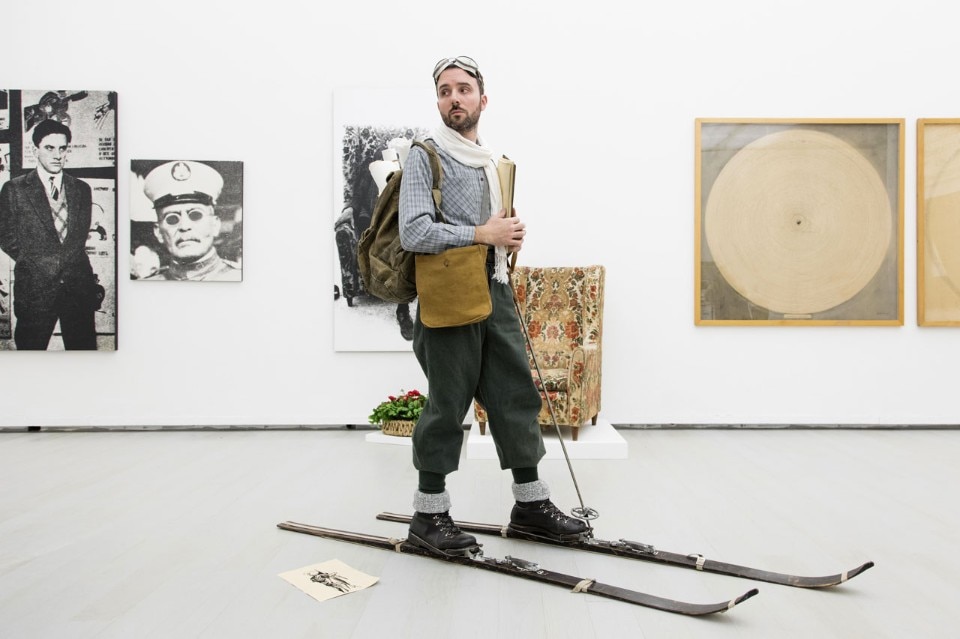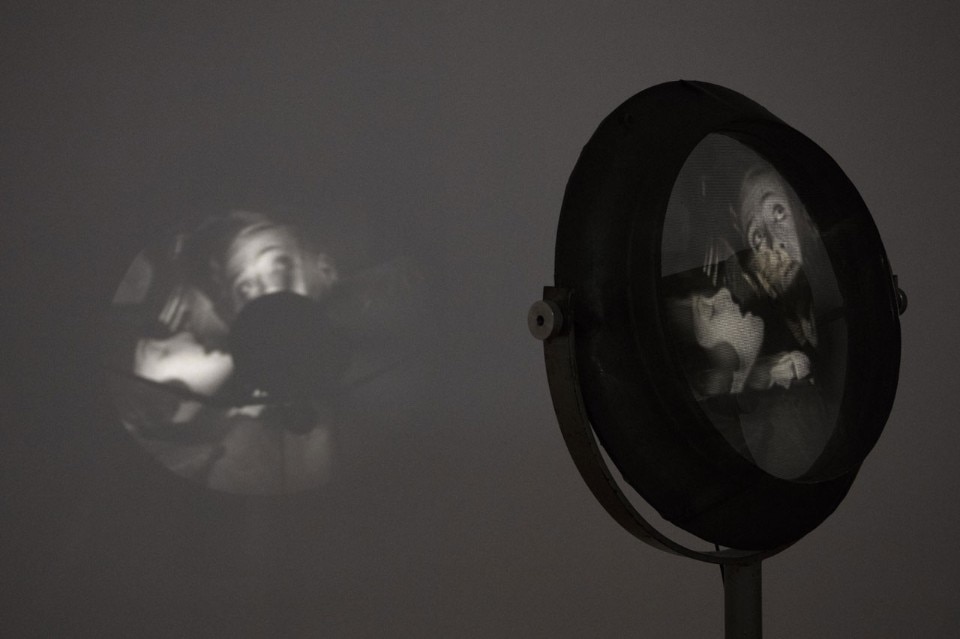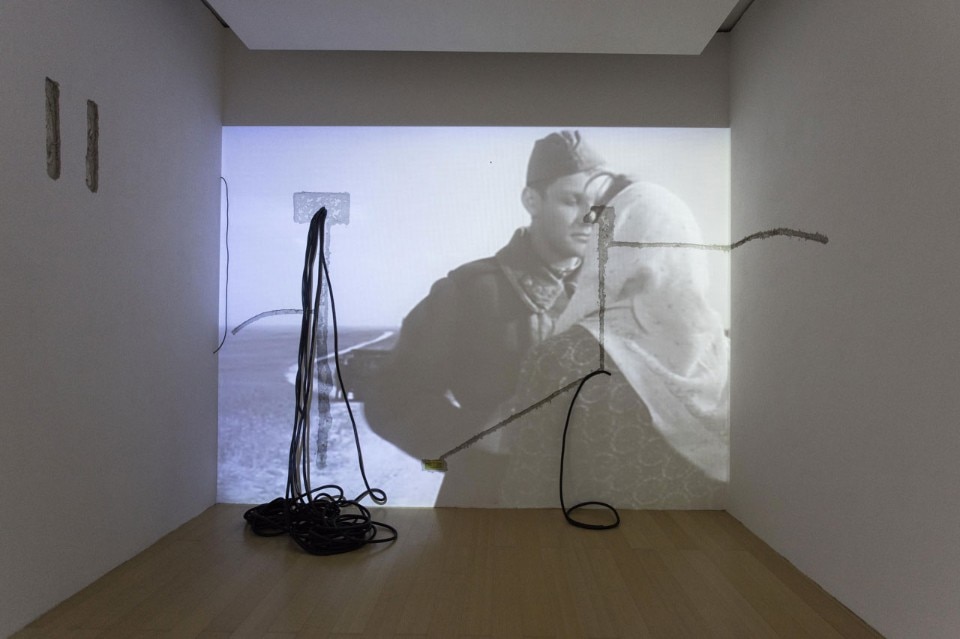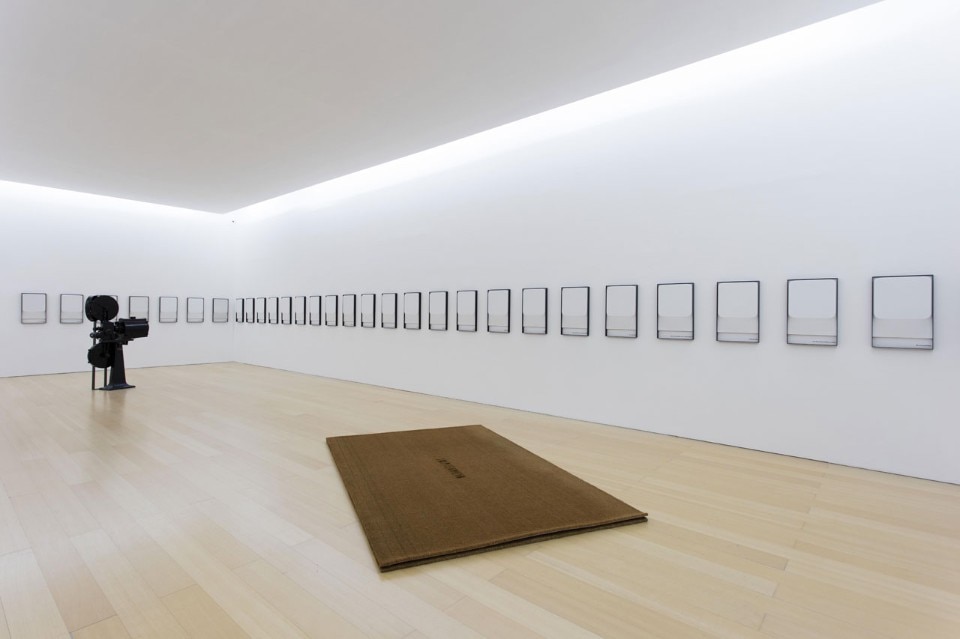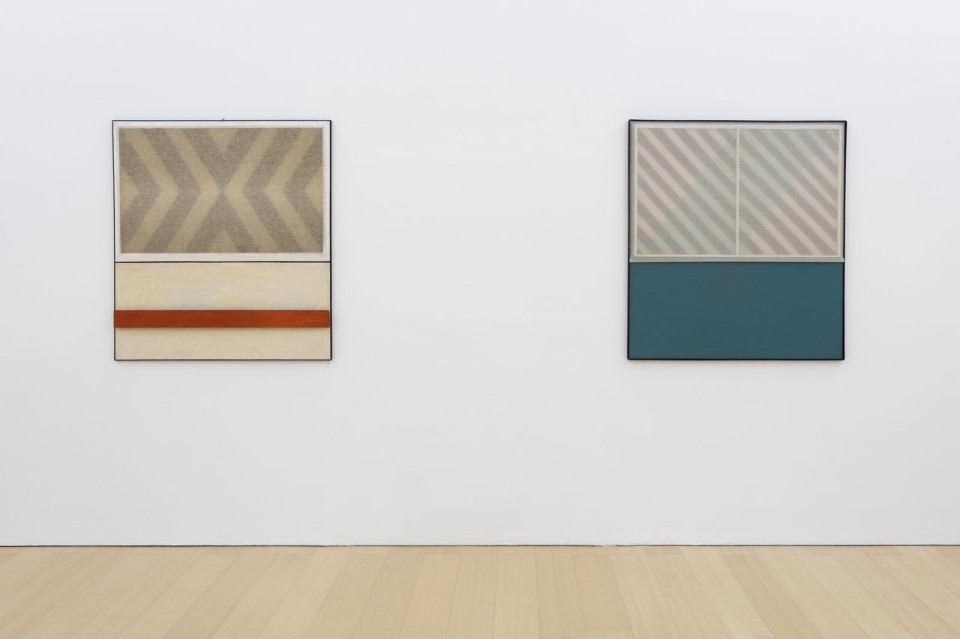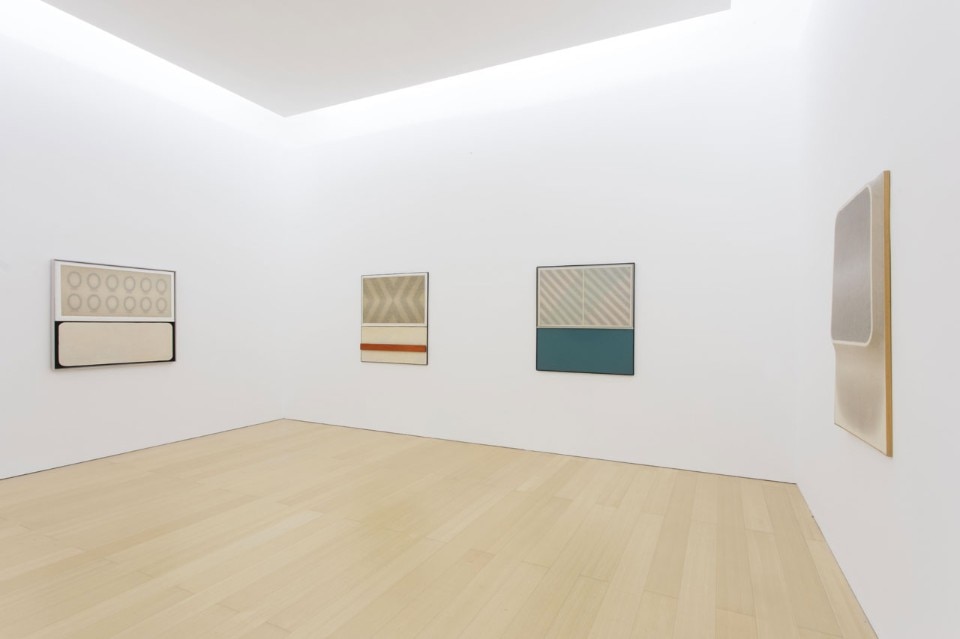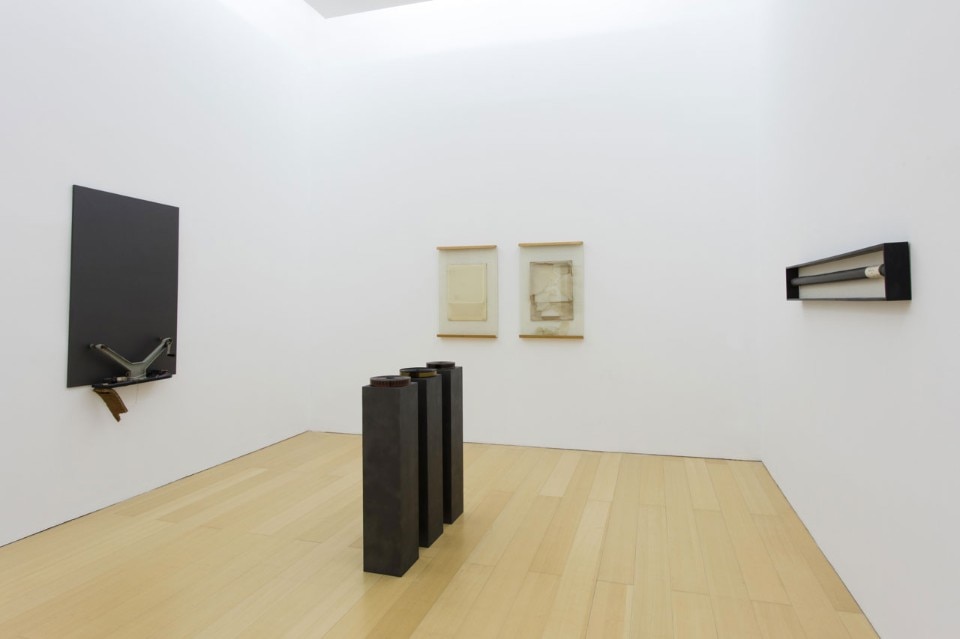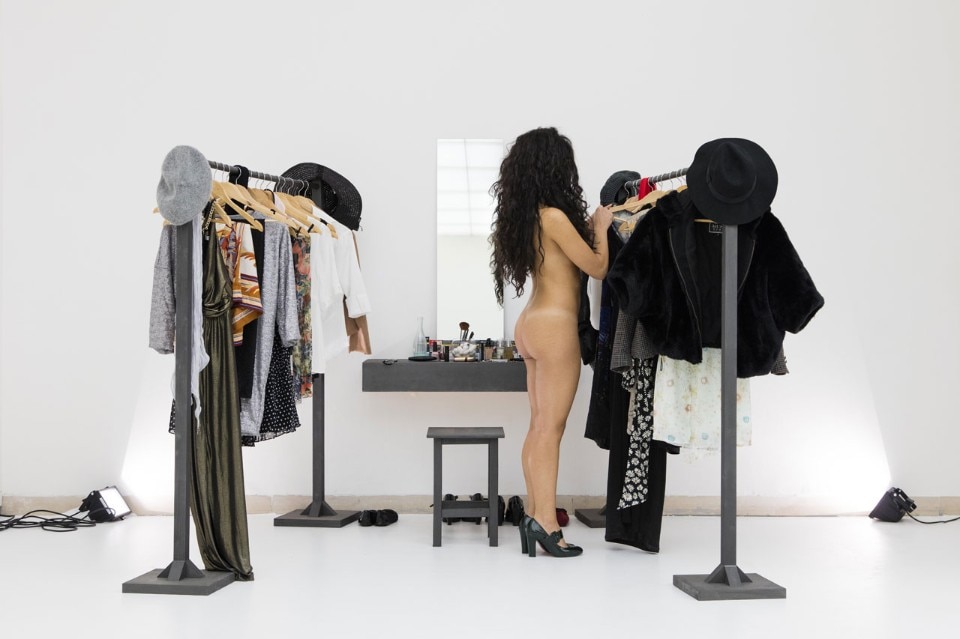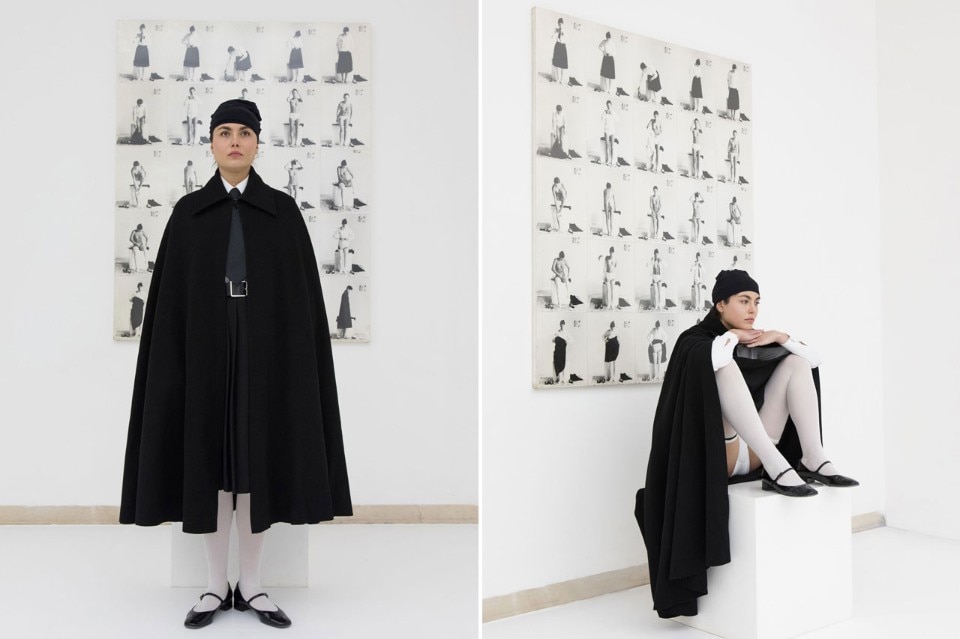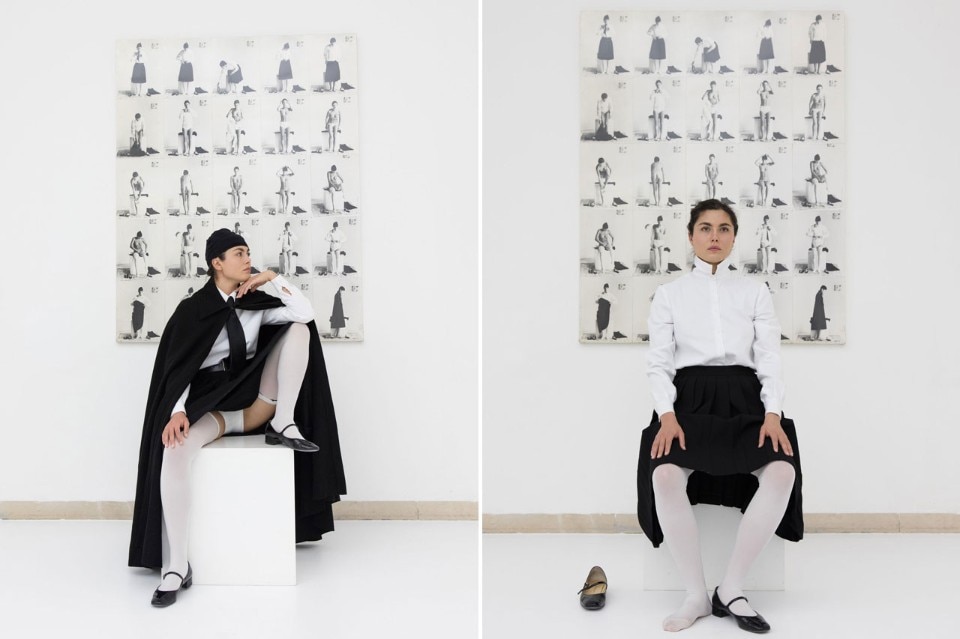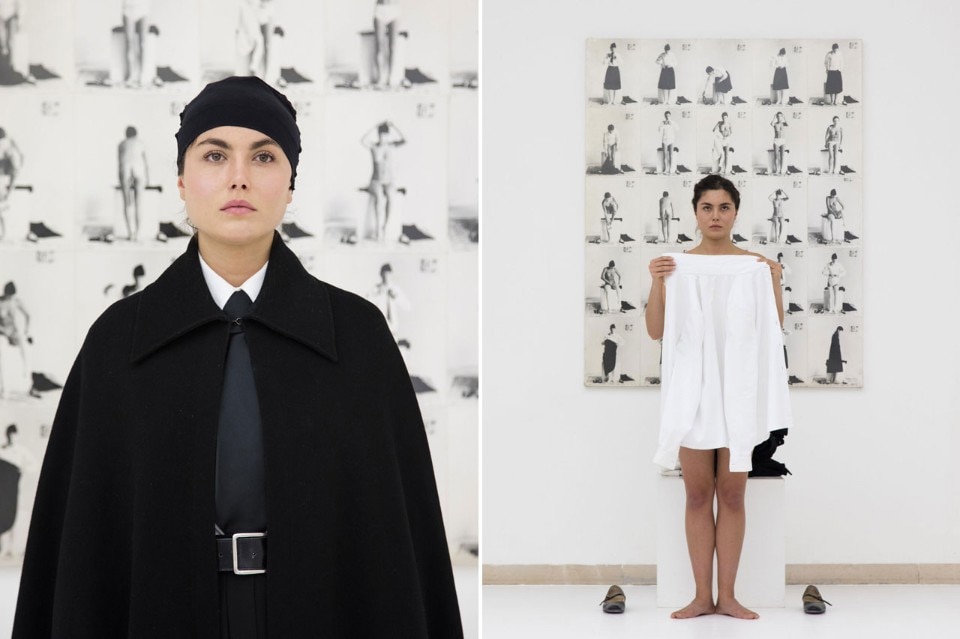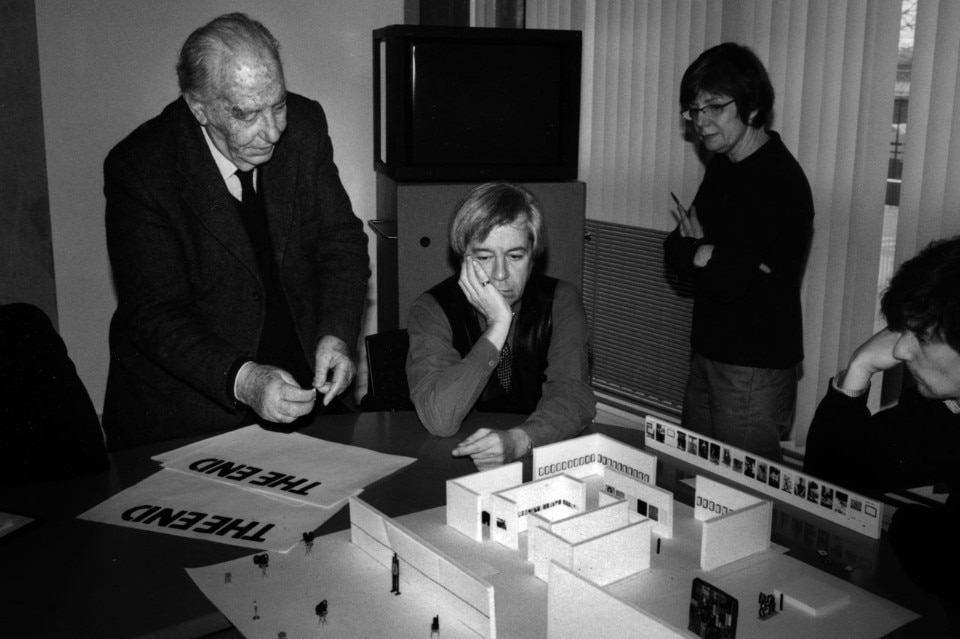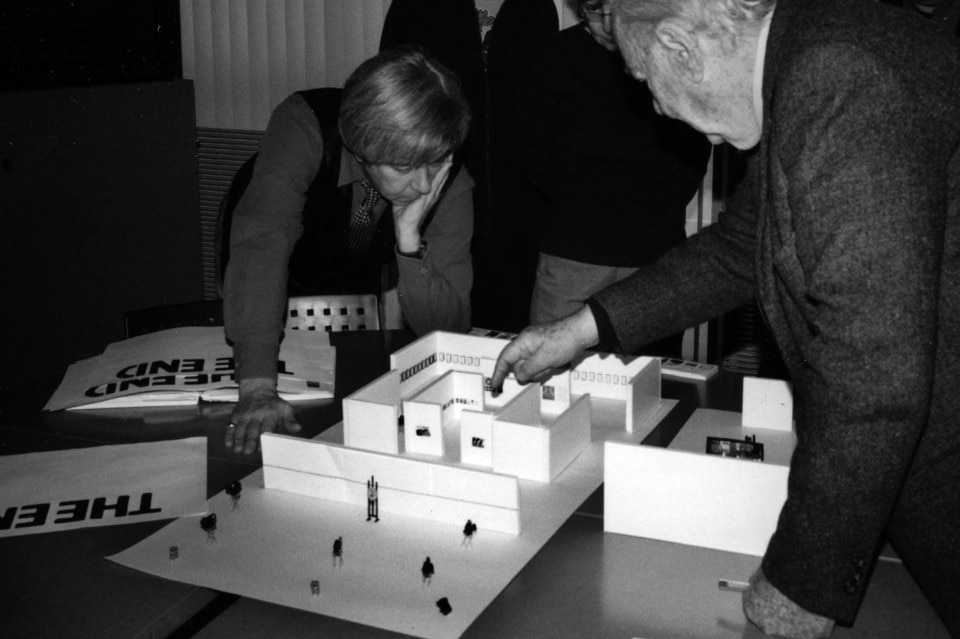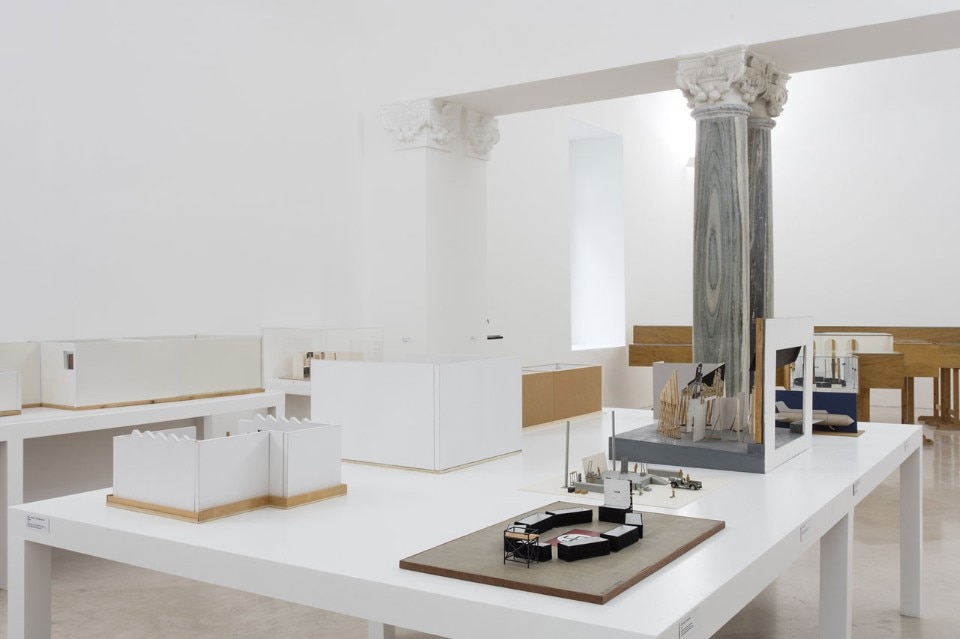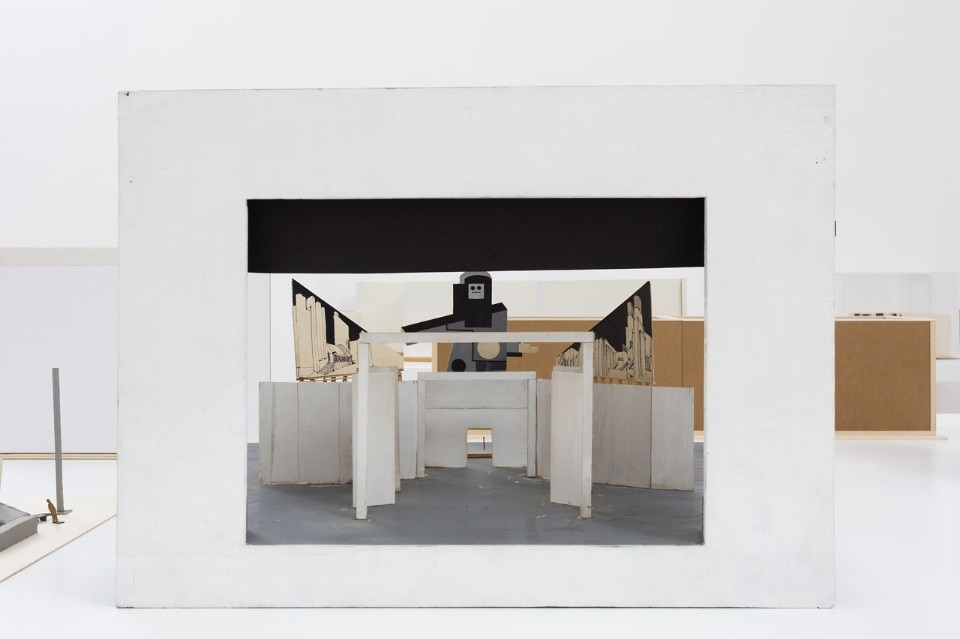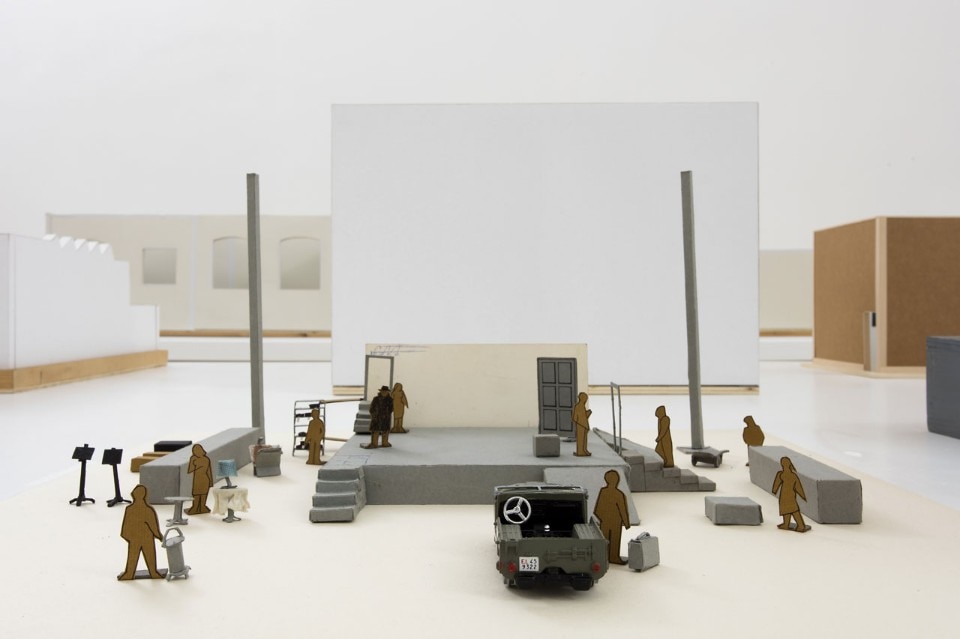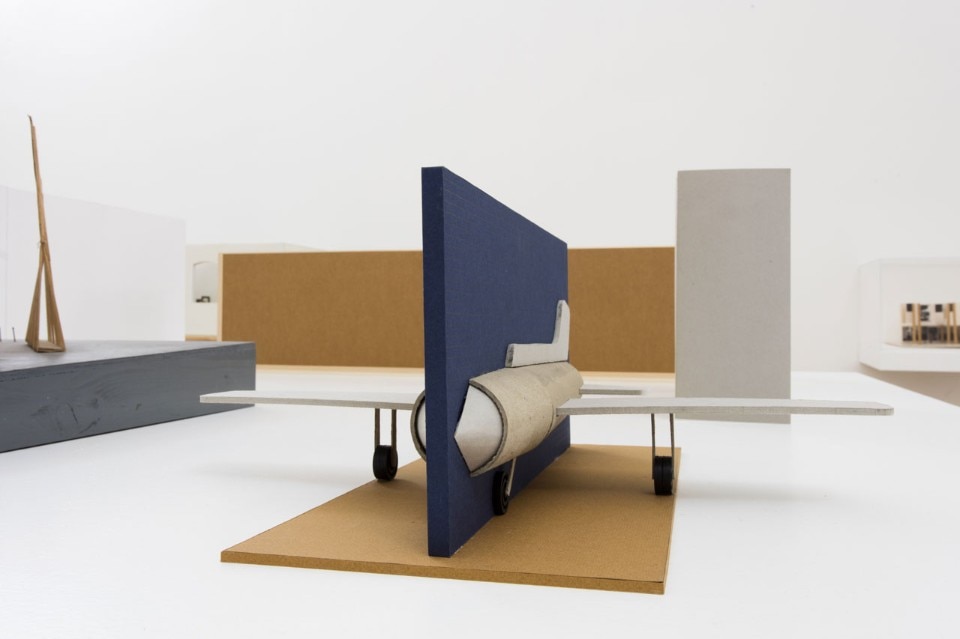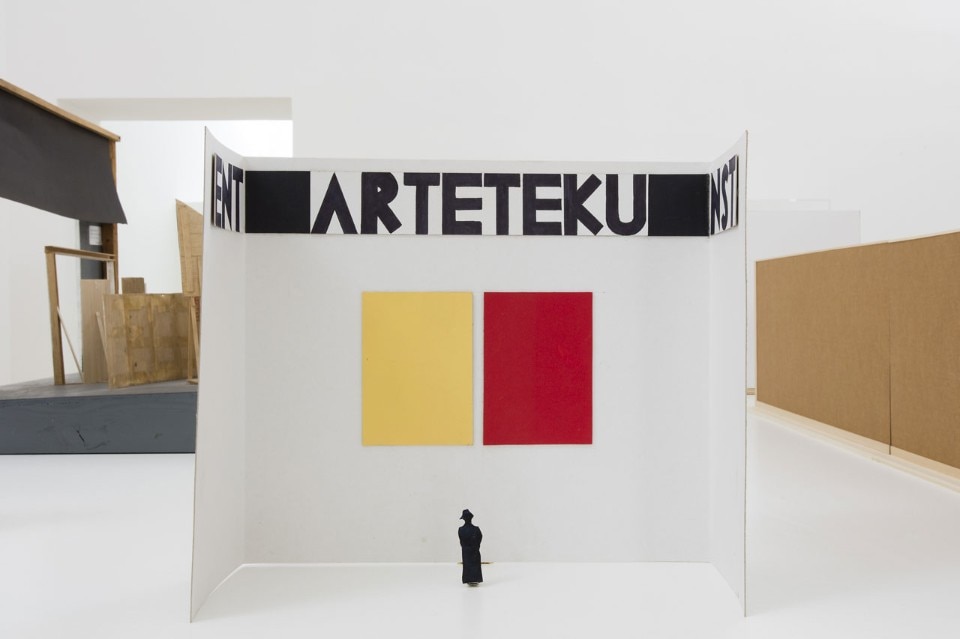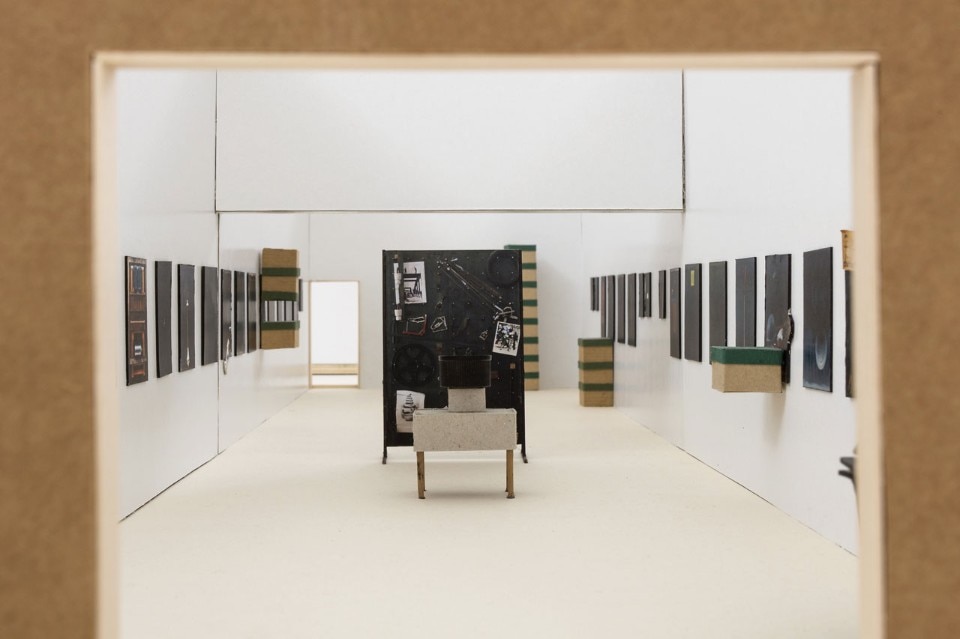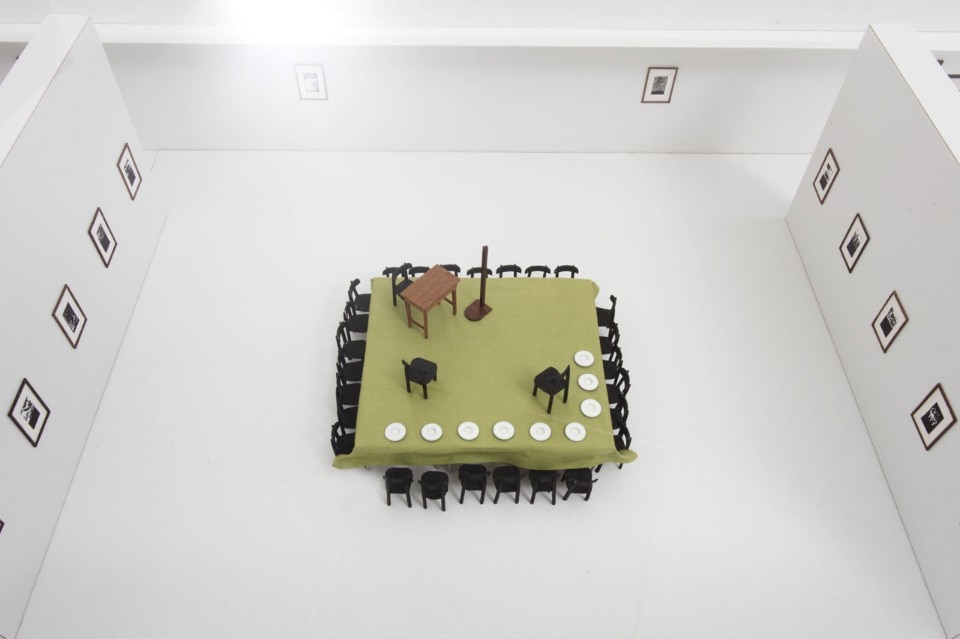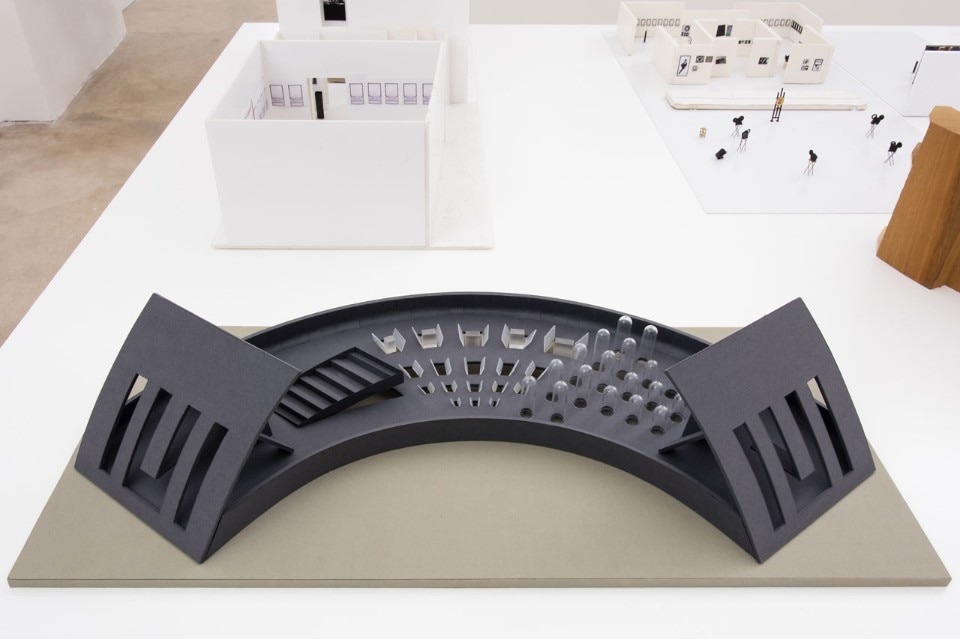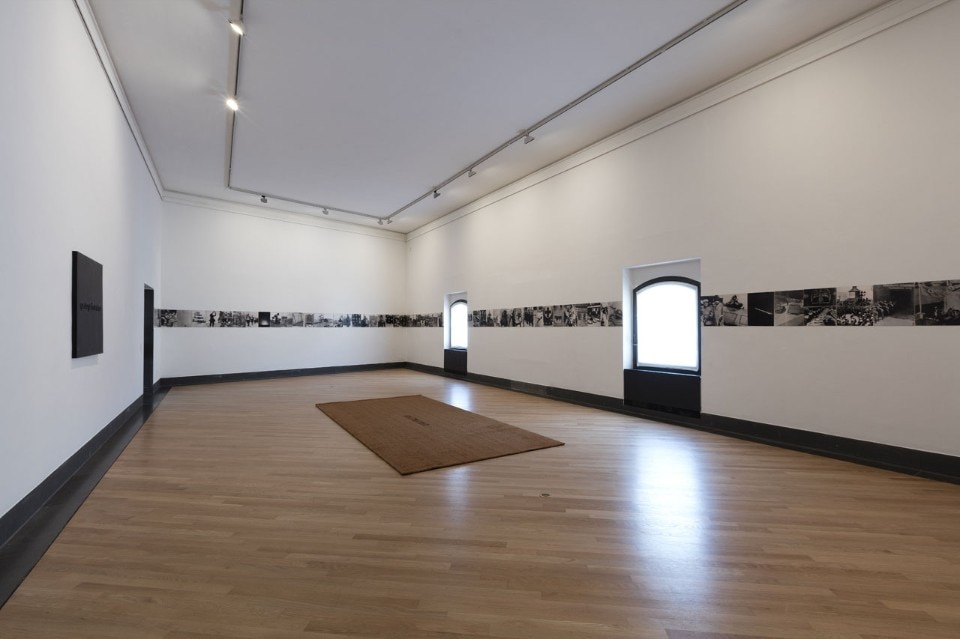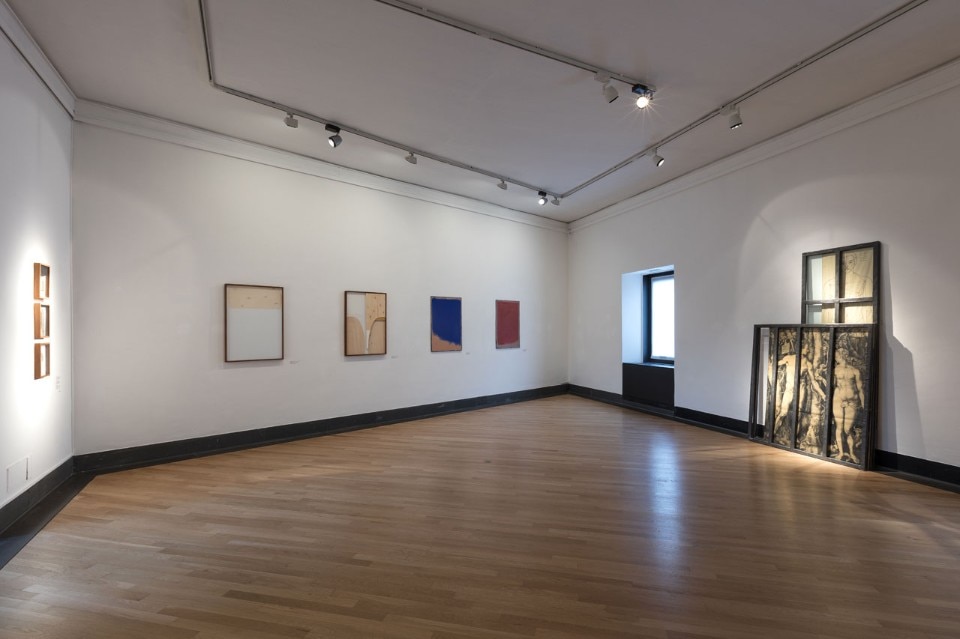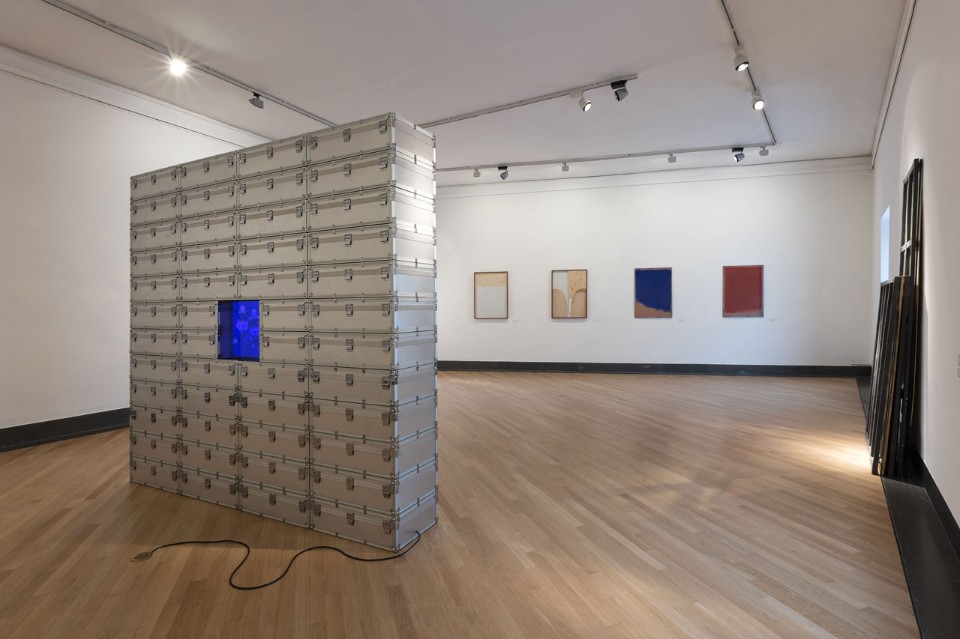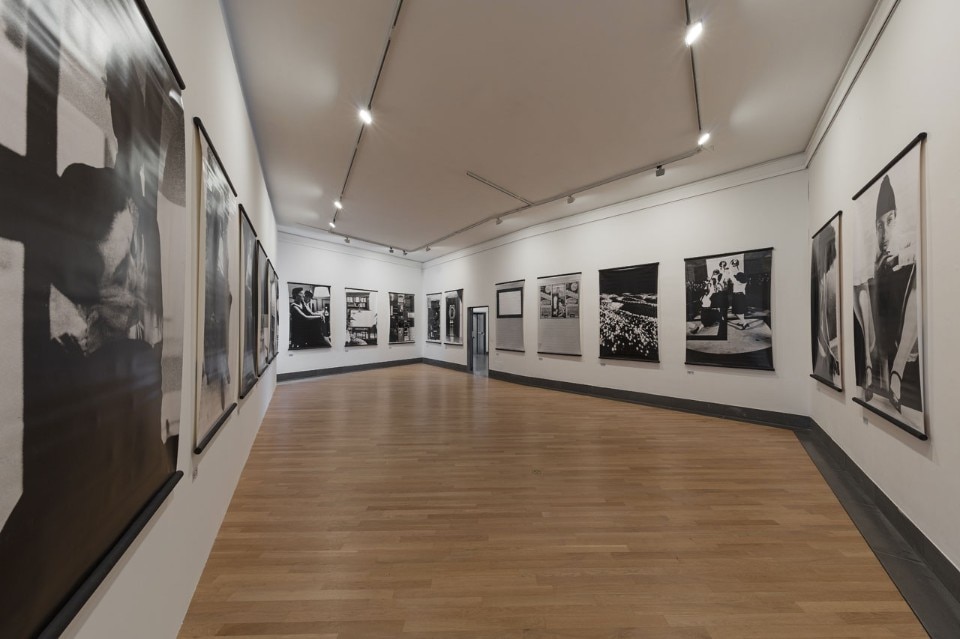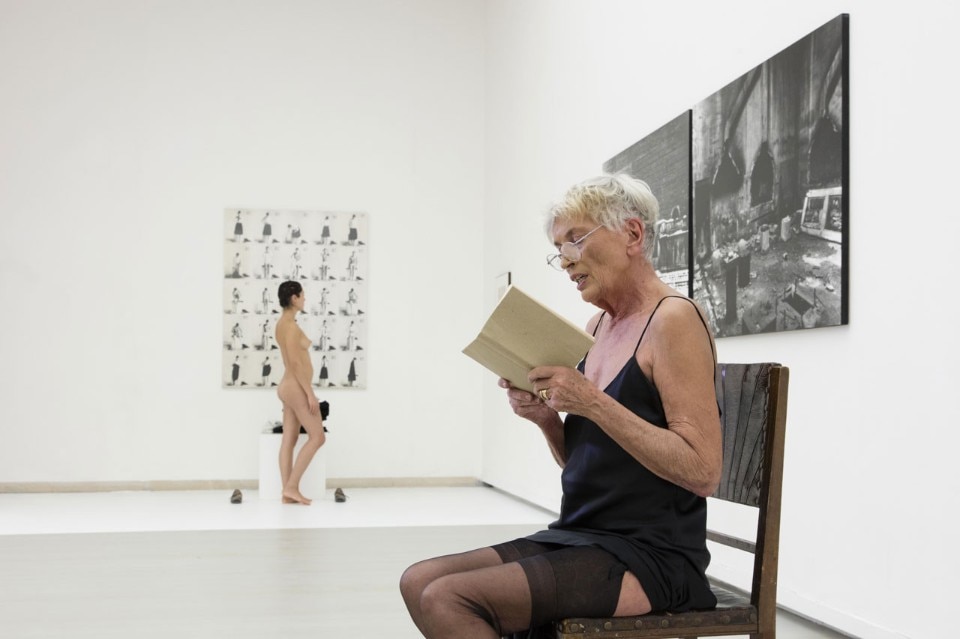
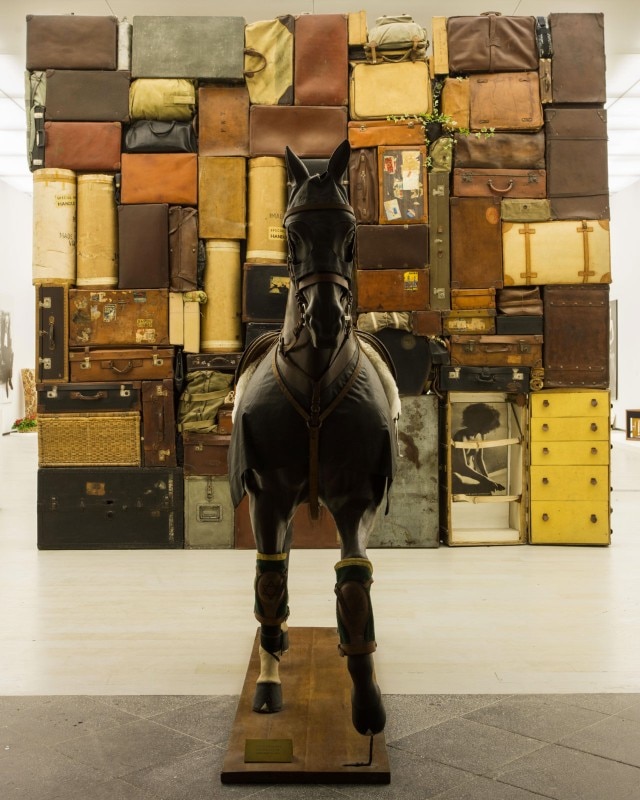
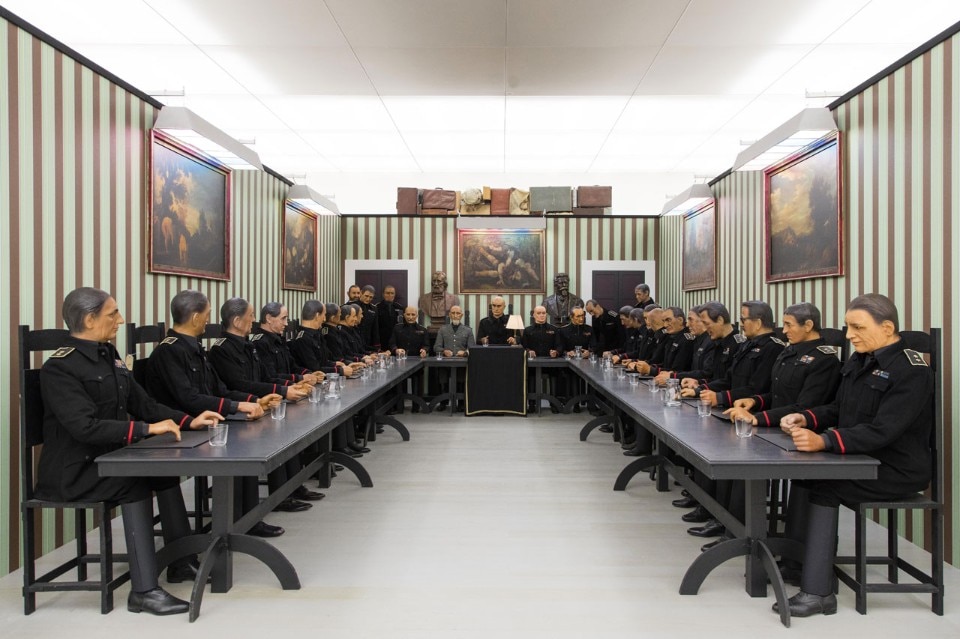
Continuing the visitors’ route, just after Ebrea, we are blocked by a wall of suitcases and must walk around them to get by. Old valises made of leather and wood, of different sizes. It is a metaphor for all the exiles and refugees in the world. It is called Muro Occidentale o del Pianto (1993). Right after, we are drawn into the grandiose staging of a scene: a meeting is underway; Benito Mussolini and 28 of his high-ranking men are sitting around a horseshoe-shaped table discussing how to react to the Allied invasion of Sicily and what position to take regarding their German allies. The figures are full-scale, wearing military uniforms, sitting in natural positions with their arms crossed or lifted, hands clasped in tension or stretched toward a glass of water. Voices resound loud and strong. The decisions being made are crucial; the ideas on the possible developments of the situation are diverse. We are watching the last session of the Grand Council of Fascism. We can take part, enter inside the two wings of the table, closely observe the seated figures, and listen to the exchange of opinions on which depended the fate of Italy and Europe. The work, made in 1975, is titled Sala del Gran Consiglio (Oscuramento). It places us face to face with history being made, and it makes us feel the full weight of our position.
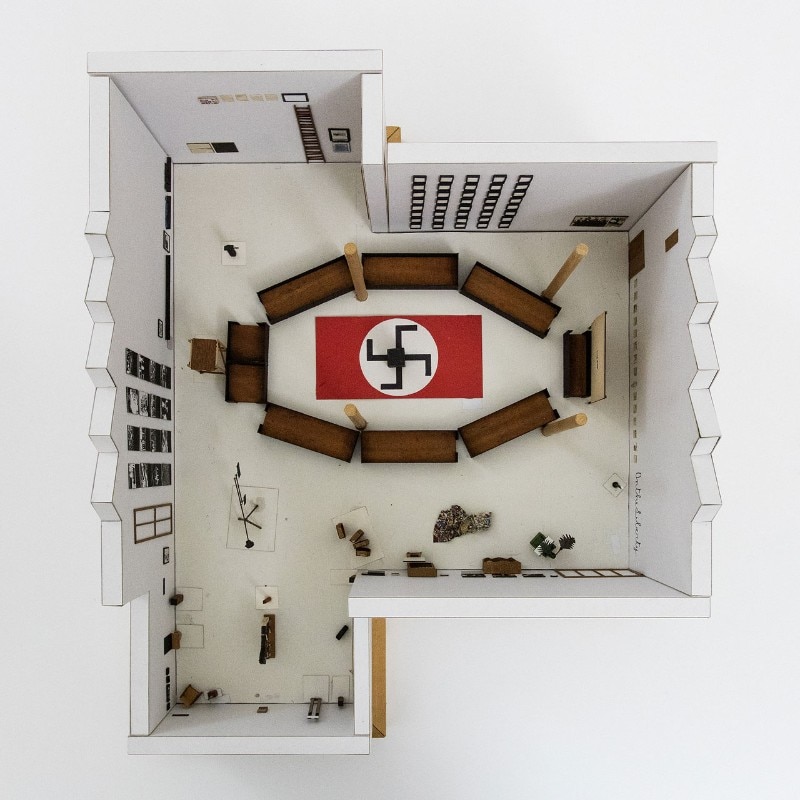
The exhibition at the Madre comprises a large number of artworks positioned on different levels. On the ground floor, a room called Re_PUBBLICA Madre hosts the above-mentioned installations. On the mezzanine there are films and documentary materials. On the third floor, a suite of rooms is dedicated to Mauri's interest in the moving image.
Here, the chronological and thematic route proceeds in a continuous fashion in a circular loop that highlights the presence of recurring elements in all the artist’s work: the television, the film projector, the screen, and movie images, which Mauri acquired to deconstruct and reinterpret. He stresses the linguistic mechanisms through which the conscious can be manipulated. The Italian word “FINE” is seen in his first work, The End (1957–58), and it comes back over and over until the last one, where it is written directly on the wall. The end is understood as a paradoxically ever-present entity that is always procrastinated.
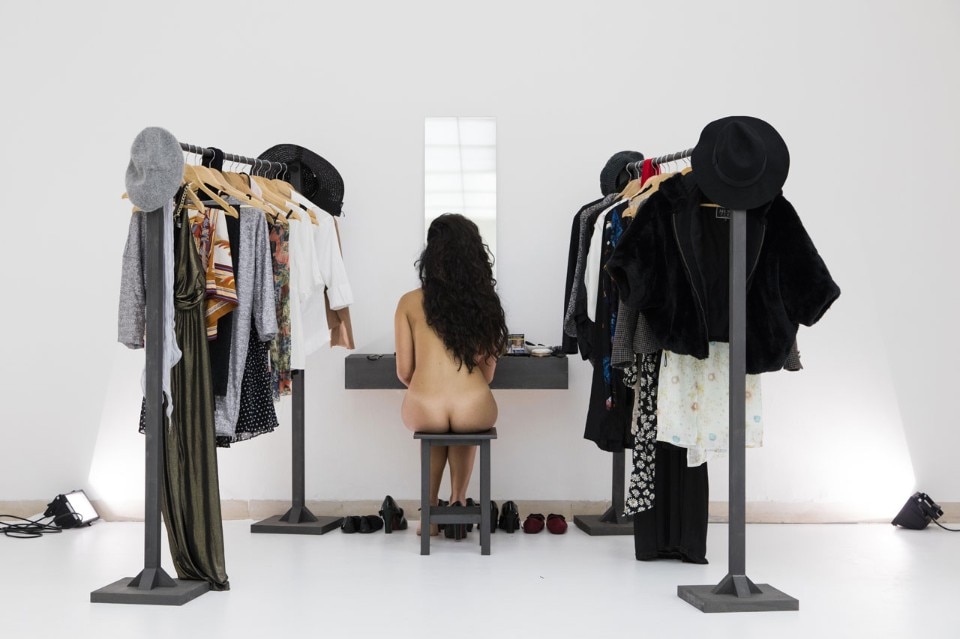
We see Mauri’s first paintings, continuing into the 1960s with Braccio di Ferro and Cassetto, both from 1960 and linked to the brief period during which he looked to the pop art movement with interest. In the meanwhile he made his first Schermi. These represent a shift of analysis: from collective imagination connected to merchandise and mass-produced icons, to collective imagination connected to the fiction of television and movies.
The exhibition proceeds. The 36-screen installation Warum ein Gedanke einen Raum verpestet? / Perché un pensiero intossica una stanza? (1972) makes the screens work like an extension of the architecture that is hosting them. The installation Luna (1968) brings us “inside” the screen and the images it transmits, specifically the moon landing. Ricostruzione della memoria a percezione spenta (1988) is an attempt to give a visible form to non-programmed thoughts. Then there are Mauri’s Zerbini (“doormats”), some of his last serial work, including L'ospite armeno (2001), a screen-like threshold to be walked over by visitors. One of the central rooms hosts Intellettuale, an installation taken from a performance made with Pier Paolo Pasolini in 1975, where the film director’s chest was the screen upon which Pasolini’s movie The Gospel According to St. Matthew (1964) was projected.
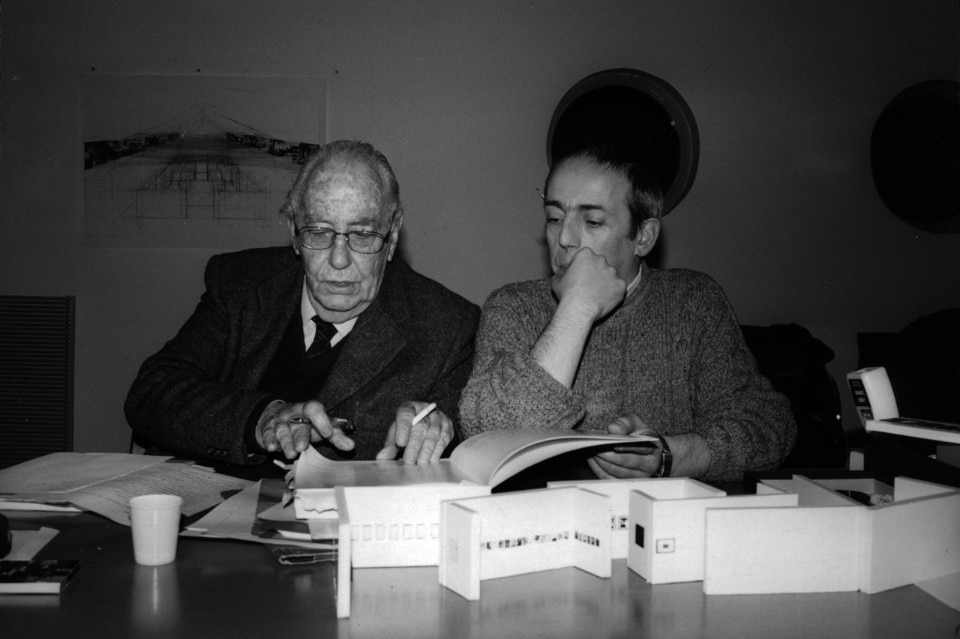
A precious element of this collection of work is hosted in the Madre’s Sala delle Colonne, which displays architectural models initially made by Mauri himself, and subsequently made for several decades by a close assistant, Claudio Cantelmi (1962). They are seen for the first time since 1994, when the models were shown at the exhibition Modelli da Opere e Azioni (1954–1994) held at the Santa Caterina Church in L’Aquila. Cantelmi explains how Mauri used to want a clear vision of the show in its entirety, and would not start organising a show of importance without having a scale model of it, equipped with copies of his artwork on the same scale. Many of them were “travel models”, meaning that they could be disassembled and transported to meetings in an attaché case. Two of these were made for Mauri exhibitions held at the Kunsthalle in Klagenfurt, Austria (1997) and at Le Fresnoy – Studio National des Arts Contemporains in Tourcoing, France (2003). In addition to the architectural models, others were crafted to visualise solutions for individual pieces: Macchina per forare acquerelli (1990), for instance, is a large pantograph for sculpture, whose pointers pierce the centre of two watercolours painted by the artist.
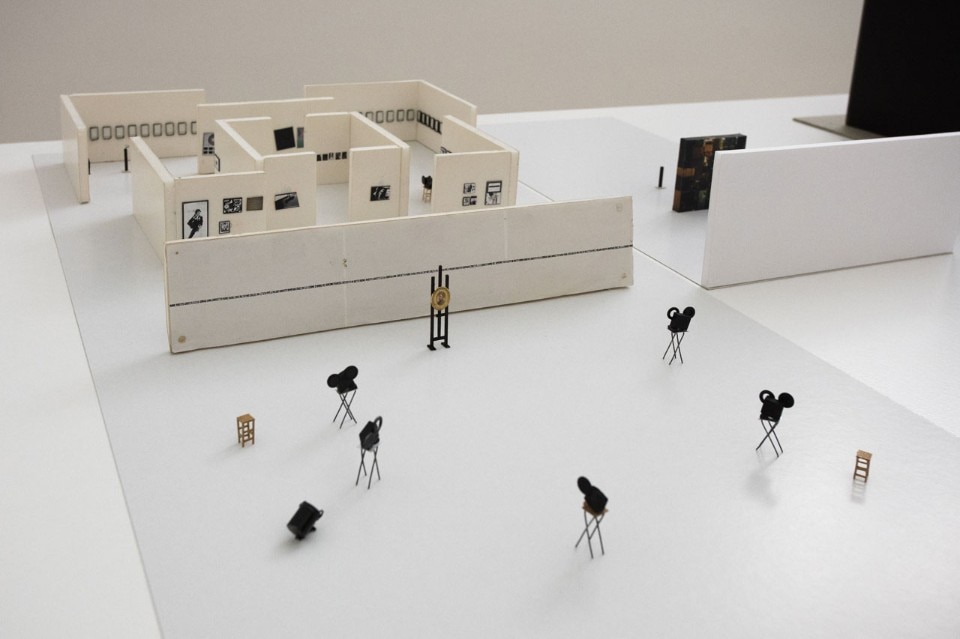
Observing the models, we note how in Mauri’s view the spaces of a museum’s “white cube” intersect those of the cinematographical “black box” and the theatrical stage. His perfectionism in determining the way each work would be experienced along the exhibition route was rooted in the profound correlation he saw between expositional methods, means of expression, and content. He interpreted artistic experimentation as an ambit of reflection in which to face the ethical challenges of the present. The compositional elements of his work are never limited to exterior appearances, but respond to criteria of necessity, meaning that each one needed to be pondered carefully. Hence not only Mauri’s work is characterised by a great control of form, but also his exhibitions were prepared accurately in their overall design.
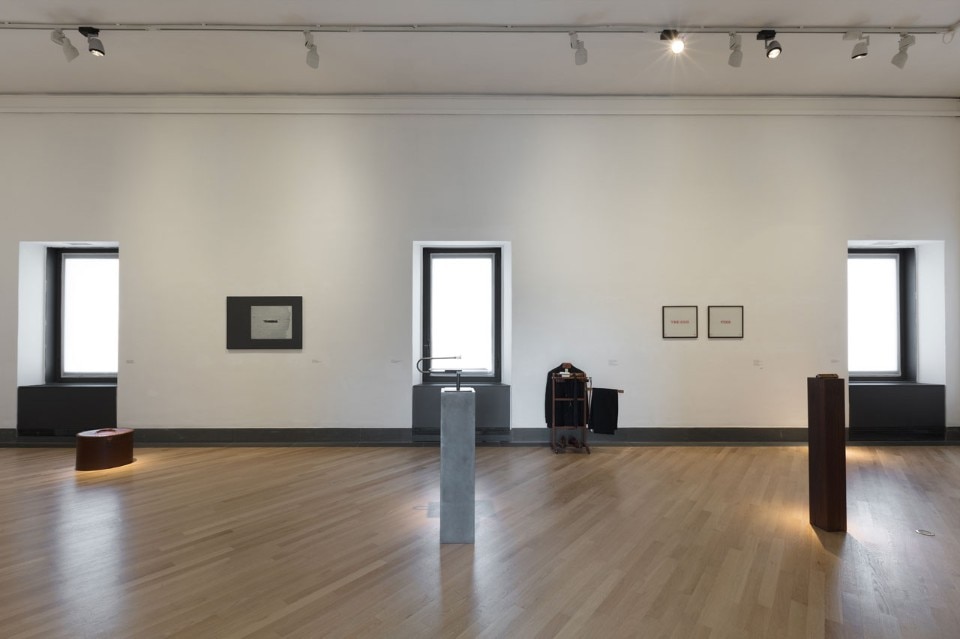
Hence, it is no coincidence that this show includes two projects dedicated to the protests and massacre that took place on Beijing’s Tiananmen Square on 3 and 4 June 1989: Studenti and Cina ASIA Nuova. The latter is again a wall of suitcases. This time it refers to the Great Wall, and the luggage is made of rigid, modern and stainless steel. In the middle is a picture of an execution in which both soldiers and students look young and lost. This communicates how war always feeds on easily manipulated young people, turning them time after time into victims and executioners. Here we see Mauri’s interest in the way media events are communicated. It is expressed in the instruments used by the media and combined with the artist's urgency to transmit a message that is above all ethical: what has happened can happen again. The decision whether to abstain from preventing it and allow our conscious to grow numb, or practice the noble art of dissent concerns all of us.
until 6 March 2017
Fabio Mauri. Retrospettiva a luce solida
Curators: Laura Cherubini, Andrea Viliani
Museo Madre, Naples
27 January 2017, h. 18,30
Riedition of the historical performance Ebrea
Sala delle Capriate, Palazzo della Ragione, Città Alta
GAMeC, Bergamo

